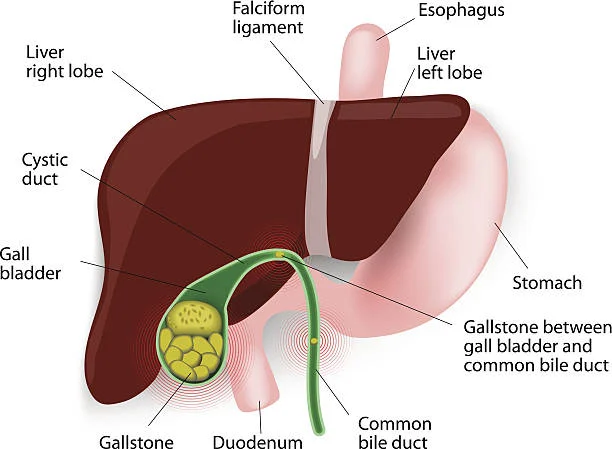What to know about gallstones
John Imuemu often feels pains in the upper right area of his abdomen, and the pains may be constant sometimes. He said the pains may be sharp, dull and when the pains continued, he decided to go to the hospital where he was diagnosed with gallstones. According to Dr Ofure Eboreime, medical director, Ohize Medical […]

gallstones image 1
John Imuemu often feels pains in the upper right area of his abdomen, and the pains may be constant sometimes.
He said the pains may be sharp, dull and when the pains continued, he decided to go to the hospital where he was diagnosed with gallstones.
According to Dr Ofure Eboreime, medical director, Ohize Medical Centre, Benin City, gallstones are stone-like entities in the gallbladder, which lie below or on the surface of the liver.
He said, “It is the reservoir that stores the bile (greenish, bitter fluid) that is responsible for emulsification and absorption of fat and some vitamins (A, D, E and K).”
He explained that gallstones are common, especially among women who are in their 50s, fair, fat and fertile (having many children).
He listed the causes of gallstones formation to include bacteria, diet, balance between factors that make bile liquid and factors that sediment or concentrate bile.
Medical experts said gallstones may cause no signs or symptoms. However, if a gallstone lodges in a duct and causes a blockage, the following signs and symptoms may be seen:
– Sudden and rapidly intensifying pain in the upper right portion of your abdomen.
-Sudden and rapidly intensifying pain in the centre of your abdomen, just below your breastbone.
-Back pain between your shoulder blades.
-Pain in your right shoulder.
– Vomiting or nausea.
Gallstone pain may last from several minutes to a few hours.
Dr Eboreime further said the diagnosis of the condition starts from the history of the pains in the right upper abdomen, physical examination and when pain is depressed as well as ultra sonographic scans.
He said the ailment is prevented through proper diet and adequate fluid intake.
Other ways to reduce risk of gallstones are not skipping meals, eating more high-fiber foods, and maintaining a healthy wealth.
He said the treatment of gallstones includes removal of the gallbladder, use of antibiotics, pain killer and bed rest, among others.
